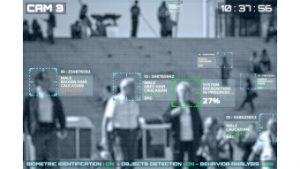
Video analytics has eaten a few free lunches over the last 15 years. While it has certainly added some value to video installations, there has been much debate about exactly how intelligent the technology really is and whether it provides satisfactory ROI. But in 2018, there is now a growing belief that video analytics could finally move beyond what has been achieved through conventional rule-based systems.
The new report, “The Global Market for AI Video Analytics 2018 to 2023,” identifies a number of reasons why video analytics is about to cross the Rubicon. The first is that major advances in semiconductor architecture are now enabling much faster processing, empowering deep learning and machine learning algorithms to analyze data many times faster than was previously possible.
GPU chip manufacturers like Nvidia have found that these semiconductor architectures can deliver much better performance for AI chip applications. This initiative has come from relatively smaller manufacturers that are now developing AI chips and analytic software products. Indeed, the venture capital industry is now busy pouring billions of dollars into financing these companies. While researching this report, 128 companies were identified across the world that are now in some way helping (hardware & software) to deliver AI video analytic solutions.
There is still much to be done in perfecting the technology and getting it to market, but new tools and processes have opened up the opportunity to bring AI products to the video analytics market, potentially revolutionizing its performance and capability.
New AI platforms have the capacity and capability to deliver video surveillance solutions that are intelligent. This will further drive demand for AI video analytics, not only for new projects but also in potential retrofits for millions of existing video surveillance installations.
The practical aspects of getting AI solutions to market will be challenging and it will require more than a little tinkering with the established routes of distribution and installation.
Video surveillance systems generate vast amounts of useful data but sadly most of it is not being utilized. So, there is huge potential to maximize the value of this data by converting it from “dumb to actionable.” The material is already out there just waiting to be mined.
The enterprise sector, across a number of the most important vertical markets for the video surveillance business, is now making its first investments in AI video analytic solutions. The point of inflexion on the growth curve could be reached within the next 18 months. There are challenges that need to be overcome on both the supply and demand side but the potential rewards are massive for both.
New chip architectures combined with intelligent video analytics software when put to work on the gargantuan volumes of data should improve the security, safety and performance of people, buildings and the business enterprise and, at the same time, provide a major boost to the video surveillance ecosystem











